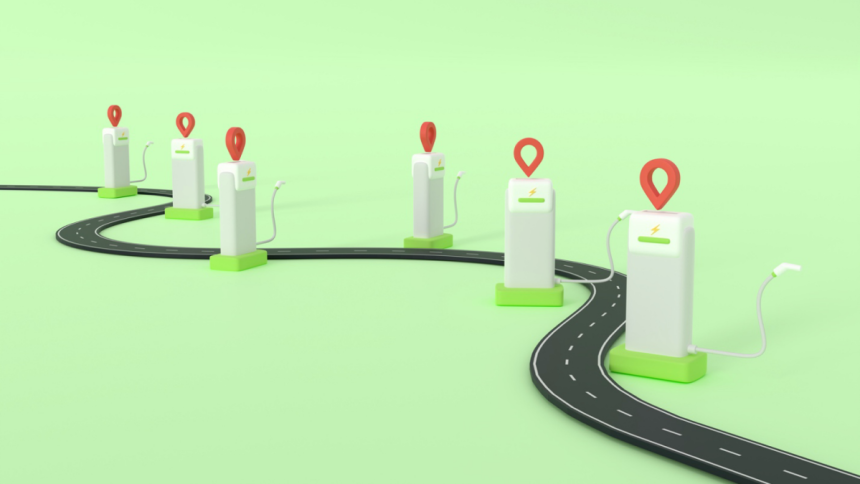Electric vehicles (EVs) represent a crucial step forward in reducing carbon emissions and transitioning to more sustainable transportation systems. As EVs gain popularity, understanding the nuances of EV charging becomes essential for potential users, policy makers, and businesses alike. This section explores the basic concept of EV charging, outlining the vital role it plays in the integration of electric vehicles into our daily lives. We will explore how the technology works, its importance in fostering wider EV adoption, and the impact of rapid technological advancements on the future of transportation.
EV charging technology is categorized mainly into three types: Level 1, Level 2, and DC fast charging. Each category serves different user needs based on speed, convenience, and vehicle type. Level 1 charging, the slowest form, typically uses a standard household outlet, making it accessible but less practical for frequent use due to slower charging speeds. Level 2 charging offers a middle ground, being faster than Level 1 and is commonly found in residential and commercial settings. DC fast charging provides rapid charging capabilities, ideal for long-distance travel, presenting a critical solution for EV users on the go.
Understanding these categories helps consumers and businesses make informed decisions about EV infrastructure investments. It also guides users in choosing the right type of charger based on their lifestyle. As the EV market grows, the charging infrastructure must evolve simultaneously to support higher demands, pushing innovations and adaptations in technology and energy distribution.
In response to the escalating demands of the growing EV market and the need for adaptable charging solutions, companies like ChargeTronix are spearheading innovation with their advanced technologies. ChargeTronix, a leading manufacturer and distributor of both AC and DC EV chargers, delivers robust and modular solutions that are renowned for their functionality and reliability. Their innovative product designs feature a distributed architecture, which allows power cabinets to energize multiple dispensers efficiently.
Such advancements not only meet the increasing demands for efficient energy distribution but also align seamlessly with the need for scalable and adaptable EV infrastructure, further enabling businesses and consumers to keep pace with the rapid evolution of the electric vehicle market.
Level 1 Charging: The Basics Unveiled
Level 1 charging is the most accessible type of EV charging, utilizing a standard 120-volt household outlet. It’s primarily suited for overnight use, typically offering about 4 to 5 miles of range per hour of charging. This type of charging is ideal for EV owners who have longer to park their vehicle, such as at home overnight or during a workday, and do not require immediate range replenishment.
Despite its slow charging rate, Level 1 charging has a significant advantage in its ubiquity and low installation cost. It does not typically require additional infrastructure or substantial electrical upgrades, making it a cost-effective entry point for new EV owners. Additionally, it’s a gentle way to charge the vehicle’s battery, potentially extending its lifespan due to the lower current involved.
However, the practicality of Level 1 charging diminishes with increased EV use and the need for faster charging options. As EV ownership expands, the limitations of Level 1 charging in meeting the needs of all users become apparent, underscoring the necessity for more robust charging solutions in both public and private settings.
Level 2 Charging: Balancing Speed and Accessibility
Level 2 charging is the middle ground in EV technology, utilizing a 240-volt supply that can significantly reduce charging time compared to Level 1. Most home and public charging stations use Level 2 technology, offering about 12 to 80 miles of range per hour of charging, depending on the station’s specific power output and the vehicle’s capacity to accept the charge.
This type of charging is versatile, serving both residential and commercial needs. It strikes a balance between fast charging times and moderate infrastructure requirements, making it ideal for daily use by average commuters. For homeowners, installing a Level 2 charging station may require some electrical upgrades but usually is a one-time investment that pays off in terms of convenience and vehicle readiness.
In commercial settings, Level 2 chargers are often seen in parking lots, business parks, and near shopping areas, providing an essential service for employees and customers. They also act as a middle solution for properties that cannot support the high power demands of DC fast chargers, offering a significant boost in speed compared to Level 1 without the extensive infrastructure modifications.
DC Fast Charging: Revolutionizing EV Travel
Direct Current (DC) fast charging represents the pinnacle of EV charging technology. This method converts high voltage AC power to DC within the charging station and directly feeds it to the EV, drastically reducing charging time. Vehicles can be charged to 80% in as little as 20 minutes, making it ideal for long-distance travel and quick top-ups.
The rapid charging speeds of DC fast chargers are critical in reducing range anxiety—a significant barrier to EV adoption. They are primarily installed along busy highways and in urban centers where quick turnaround times are essential. However, the installation and maintenance of DC fast charging stations are more complex and costly than other types, requiring substantial electrical infrastructure and careful planning to ensure grid stability.
Despite these challenges, the strategic deployment of DC fast charging stations is expanding. It’s a critical area for investment, especially for businesses looking to attract and retain EV-driving customers. Innovations in charger technology and energy management are continually improving the efficiency and reducing the costs associated with DC fast charging, promising to enhance its accessibility and appeal.
Environmental and Economic Impacts of EV Charging
The transition to electric vehicles supported by robust charging infrastructure has significant environmental benefits. EVs reduce reliance on fossil fuels and help decrease air pollution and greenhouse gas emissions. The growth in EV charging technology thus complements global efforts to combat climate change and promotes a cleaner, more sustainable future.
Beyond environmental benefits, the economic impacts of a comprehensive EV charging network are profound. It stimulates job creation in technology, manufacturing, installation, and maintenance sectors. Moreover, it encourages consumer spending in areas with accessible EV charging, benefiting local businesses and economies.
The development of EV charging infrastructure also influences energy markets, driving innovations in electricity generation and storage. As more renewable energy sources like solar and wind are integrated into the grid, the synergy between clean energy and EVs becomes a pivotal element in achieving energy sustainability. This relationship underscores the importance of continuous investment and innovation in EV charging technologies.
Looking Forward: The Future of EV Charging
As we look to the future, the landscape of EV charging is poised for further innovation and growth. The integration of smart technologies, such as AI and IoT, into EV charging infrastructure could lead to more efficient energy management, predictive maintenance, and enhanced user experiences. Additionally, wireless charging technology is on the horizon, promising even greater convenience by reducing the need for plugs and cables.
Governments and private sectors are expected to increase their investments in EV charging infrastructure, driven by policy incentives and the escalating demand for electric vehicles. These developments will likely facilitate more rapid deployment of both Level 2 and DC fast charging stations across urban and rural areas, making electric vehicles more accessible and practical for a broader range of consumers.
The ongoing evolution of EV charging technology holds the key to accelerating the adoption of electric vehicles. By improving the convenience and efficiency of charging, we can ensure that electric vehicles are not only preferable for their environmental benefits but also for their ease of use and integration into daily life. As this sector grows, it will continue to drive innovation, environmental sustainability, and economic growth, heralding a new era in transportation.
Lynn Martelli is an editor at Readability. She received her MFA in Creative Writing from Antioch University and has worked as an editor for over 10 years. Lynn has edited a wide variety of books, including fiction, non-fiction, memoirs, and more. In her free time, Lynn enjoys reading, writing, and spending time with her family and friends.















